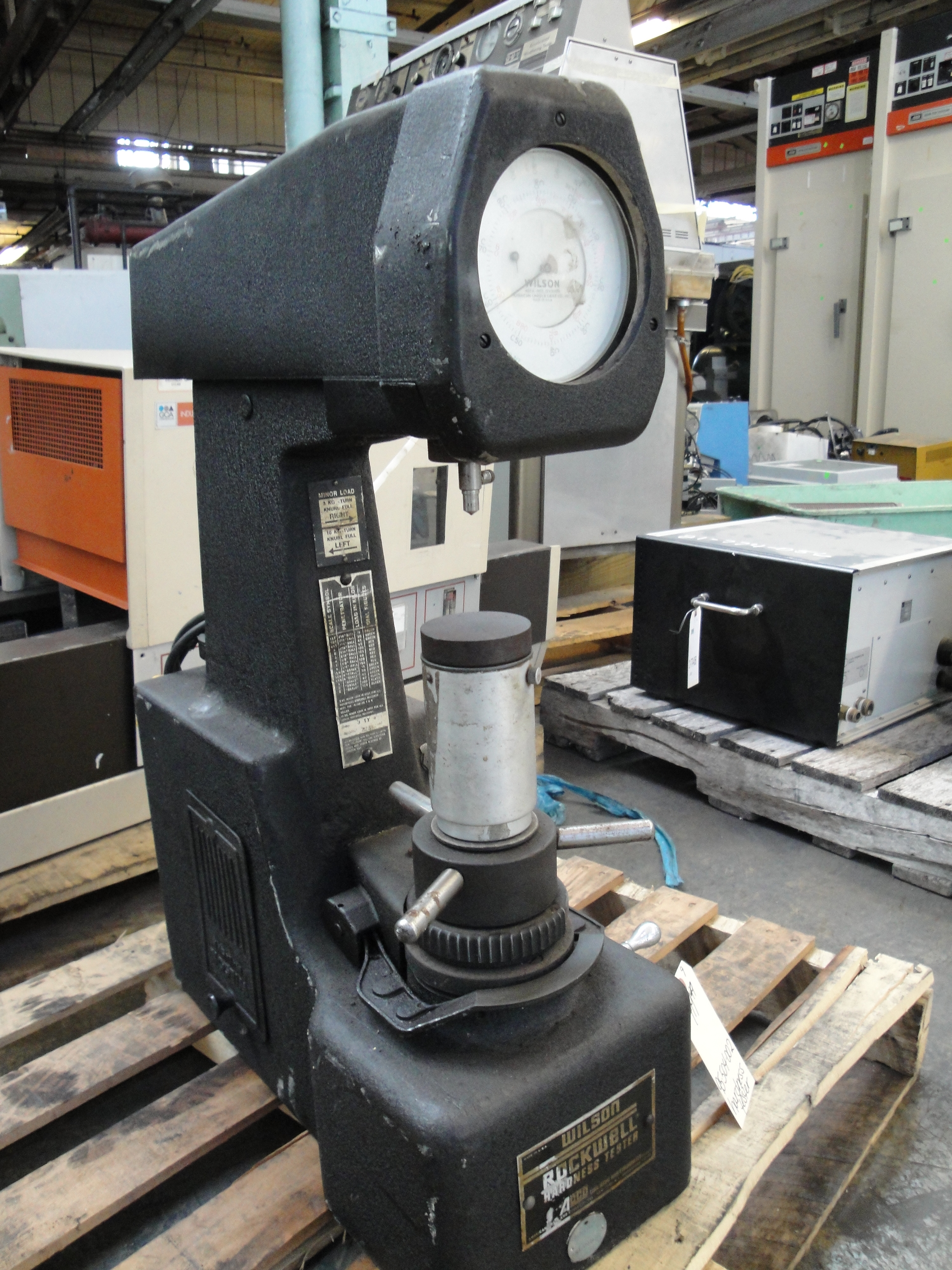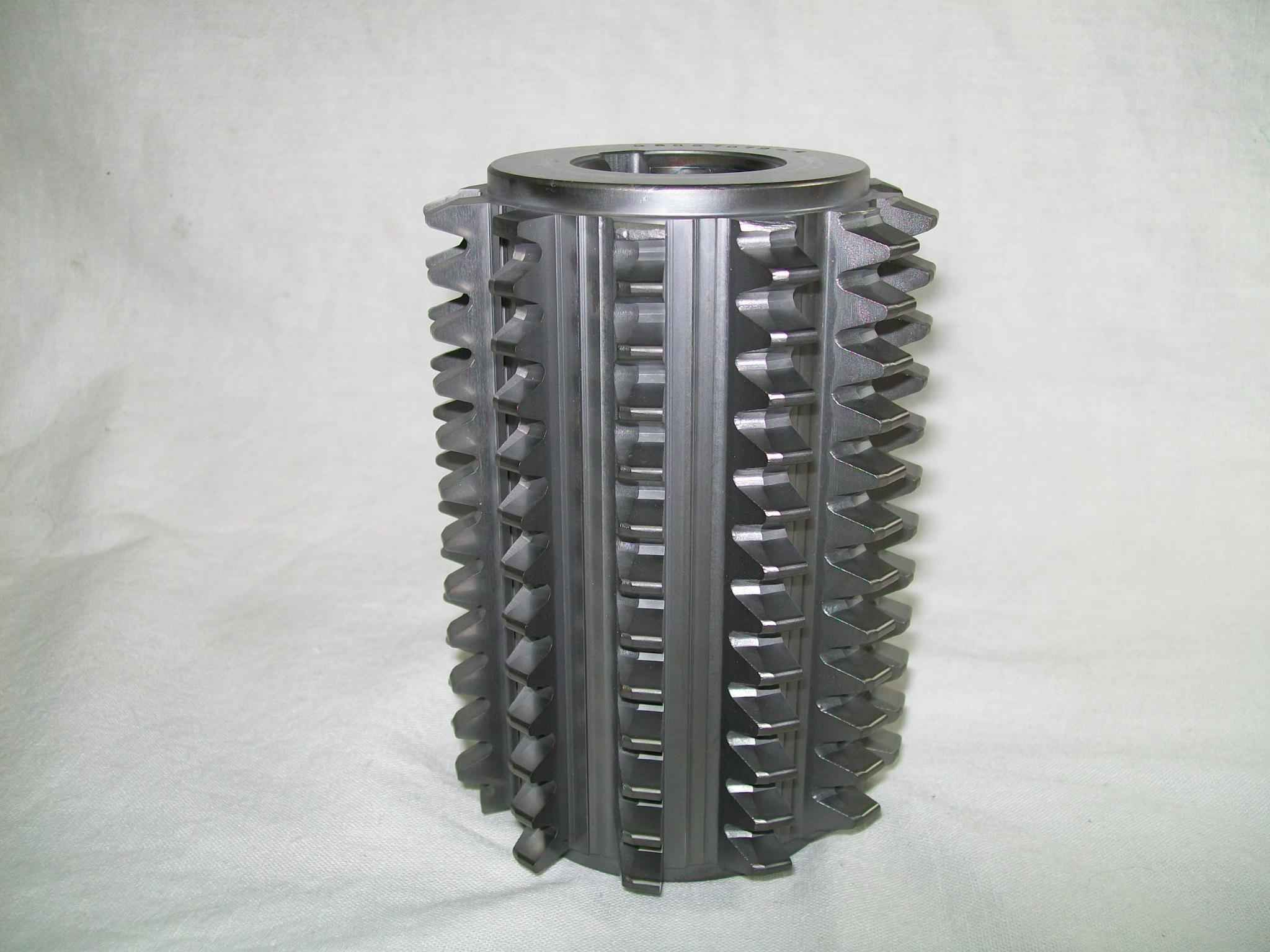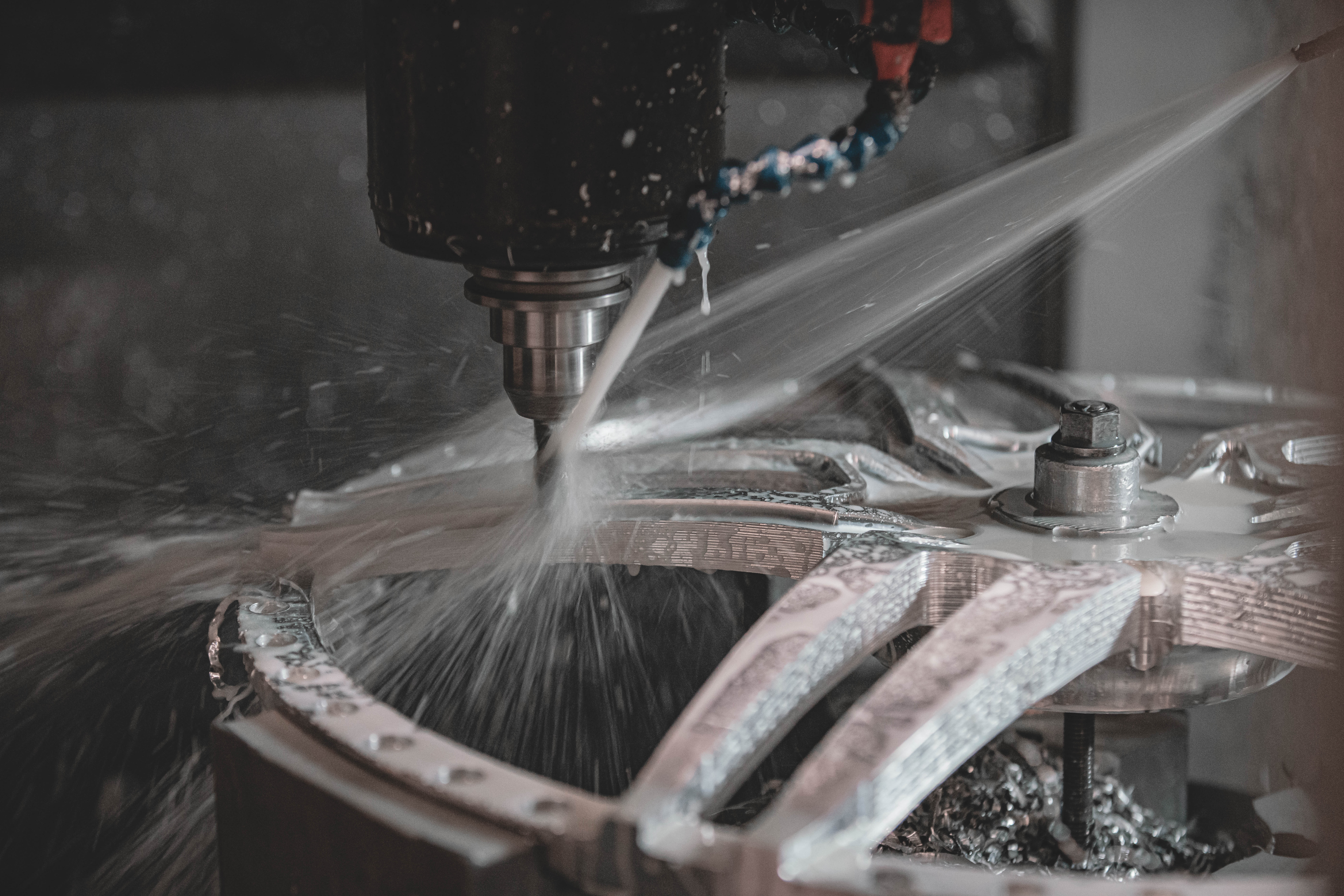|
Arbor Milling
Arbor milling is a cutting process which removes material via a multi-toothed cutter. An arbor mill is a type of milling machine characterized by its ability to rapidly remove material from a variety of materials. This milling process is not only rapid but also versatile. Process characteristics *Cuts surfaces parallel to the rotational axis of the tool unlike drilling (perpendicular to axis) *Multipoint cutter creates discontinuous chips *Capable of producing flat, shaped, or contoured surfaces on a workpiece *Cutters supported on an arbor (mandrel) *High metal removal rate *Sweeps chipped material away as it works Process schematic This process progressively makes a surface to the user's specifications as the material is moved against the milling tool or the workpiece stays stationary while the arbor milling cutter moves across it to provide the desired shape. There are two types of milling that involve the directional movement of the workpiece, conventional and climb. If the wo ... [...More Info...] [...Related Items...] OR: [Wikipedia] [Google] [Baidu] |
Milling Machine
Milling is the process of machining using rotary cutters to remove material by advancing a cutter into a workpiece. This may be done by varying directions on one or several axes, cutter head speed, and pressure. Milling covers a wide variety of different operations and machines, on scales from small individual parts to large, heavy-duty gang milling operations. It is one of the most commonly used processes for machining custom parts to precise tolerances. Milling can be done with a wide range of machine tools. The original class of machine tools for milling was the milling machine (often called a mill). After the advent of computer numerical control (CNC) in the 1960s, milling machines evolved into ''machining centers'': milling machines augmented by automatic tool changers, tool magazines or carousels, CNC capability, coolant systems, and enclosures. Milling centers are generally classified as vertical machining centers (VMCs) or horizontal machining centers (HMCs). The integr ... [...More Info...] [...Related Items...] OR: [Wikipedia] [Google] [Baidu] |
Drilling
Drilling is a cutting process where a drill bit is spun to cut a hole of circular cross section (geometry), cross-section in solid materials. The drill bit is usually a rotary Cutting tool (machining), cutting tool, often multi-point. The bit is Pressure, pressed against the work-piece and rotated at rates from hundreds to thousands of revolutions per minute. This forces the cutting edge against the work-piece, cutting off Swarf, chips (swarf) from the hole as it is drilled. In Rock (geology), rock drilling, the hole is usually not made through a circular cutting motion, though the bit is usually rotated. Instead, the hole is usually made by hammering a drill bit into the hole with quickly repeated short movements. The hammering action can be performed from outside the hole (top-hammer drill) or within the hole (down-the-hole drill, DTH). Drills used for horizontal drilling are called drifter drills. In rare cases, specially-shaped bits are used to cut holes of non-circular cro ... [...More Info...] [...Related Items...] OR: [Wikipedia] [Google] [Baidu] |
Mandrel
A mandrel, mandril, or arbor is a tapered tool against which material can be forged, pressed, stretched or shaped (e.g., a ring mandrel - also called a triblet - used by jewellers to increase the diameter of a wedding ring), or a flanged or tapered or threaded bar that grips a workpiece to be machined in a lathe. A flanged mandrel is a parallel bar of a specific diameter with an integral flange towards one end, and threaded at the opposite end. Work is gripped between the flange and a nut on the thread. A tapered mandrel (often called a plain mandrel) has a taper of approximately 0.005 inches per foot and is designed to hold work by being driven into an accurate hole on the work, gripping the work by friction. A threaded mandrel may have a male or female thread, and work which has an opposing thread is screwed onto the mandrel. On a lathe, mandrels are commonly mounted between centres and driven by a lathe dog (typically flanged or tapered mandrels), but may also be gripped in ... [...More Info...] [...Related Items...] OR: [Wikipedia] [Google] [Baidu] |
Rockwell Scale
The Rockwell hardness test is a hardness test based on indentation hardness of a material. The Rockwell test measures the depth of penetration of an indenter under a large load (major load) compared to the penetration made by a preload (minor load). There are different scales, denoted by a single letter, that use different loads or indenters. The result is a dimensionless number noted as HRA, HRB, HRC, etc., where the last letter is the respective Rockwell scale. Larger numbers correspond to harder materials. When testing metals, indentation hardness correlates linearly with tensile strength. History The differential depth hardness measurement was conceived in 1908 by Viennese professor Paul Ludwik in his book ''Die Kegelprobe'' (crudely, "the cone test"). The differential-depth method subtracted out the errors associated with the mechanical imperfections of the system, such as backlash and surface imperfections. The Brinell scale, Brinell hardness test, invented in Sweden, wa ... [...More Info...] [...Related Items...] OR: [Wikipedia] [Google] [Baidu] |
Arbor Milling Possibilities
Arbor(s) or Arbour(s) may refer to: Arts and entertainment * ''Arbor'' (installation), a 2013 public artwork in Indianapolis, Indiana, US * Arbor, a counterweight-carrying device found in theater fly systems * ''The Arbor'', a 1980 play by Andrea Dunbar; also the title of a 2010 film about Dunbar * ''The Arbor'', a 1930 play by Hermann Ungar * The Arbors, a 1960s pop group Companies * Arbor Drugs, a defunct American drug store chain based in Troy, Michigan * Arbor Networks, an American software company * Arbors Records, an American jazz record label Horticulture * Arbor (garden), a structure of trees, shrubs or vines forming a shaded space; pergola * Grove (nature), a small group of trees Places * Arbor, Missouri, US * Arbor, Nebraska, US * Arbor, Texas, or Arbor Grove, US Other uses * Arbor (tool) or mandrel * Arbour (surname) * Arbor, the central post of a fishing reel to which fishing line is attached * Arbor knot, a knot commonly used to attach fishing line to a fishing r ... [...More Info...] [...Related Items...] OR: [Wikipedia] [Google] [Baidu] |
Plane (tool)
A hand plane is a tool for shaping wood using muscle power to force the cutting blade over the wood surface. Some rotary power planers are motorized power tools used for the same types of larger tasks, but are unsuitable for fine-scale planing, where a miniature hand plane is used. Generally, all planes are used to flatten, reduce the thickness of, and impart a smooth surface to a rough piece of lumber or timber. Planing is also used to produce horizontal, vertical, or inclined flat surfaces on workpieces usually too large for shaping, where the integrity of the whole requires the same smooth surface. Special types of planes are designed to cut joints or decorative mouldings. Hand planes are generally the combination of a cutting edge, such as a sharpened metal plate, attached to a firm body, that when moved over a wood surface, take up relatively uniform shavings, by nature of the body riding on the 'high spots' in the wood, and also by providing a relatively constant angle ... [...More Info...] [...Related Items...] OR: [Wikipedia] [Google] [Baidu] |
Brinell Scale
The Brinell hardness test (pronounced /brəˈnɛl/) measures the indentation hardness of materials. It determines hardness through the scale of penetration of an indenter, loaded on a material test-piece. It is one of several definitions of hardness in materials science. The hardness scale is expressed in terms of a Brinell hardness value, sometimes referred to as the Brinell hardness number but formally expressed as HBW (Hardness Brinell Wolfram – Wolfram being an alternative name for the tungsten carbide ball indenter used during the test). The test was named after Johan August Brinell (1849-1925) who developed the method at the end of the 19th century. History Premiered by Swedish engineer Johan August Brinell at the 1900 Paris Exposition, it was the first widely used and standardised hardness test in engineering and metallurgy. The large size of indentation and thus possible damage to test-pieces limits its usefulness. However, it also had the useful feature that the h ... [...More Info...] [...Related Items...] OR: [Wikipedia] [Google] [Baidu] |
Metalworking
Metalworking is the process of shaping and reshaping metals in order to create useful objects, parts, assemblies, and large scale structures. As a term, it covers a wide and diverse range of processes, skills, and tools for producing objects on every scale: from huge ships, buildings, and bridges, down to precise engine parts and delicate jewellery. The historical roots of metalworking predate recorded history; its use spans cultures, civilizations and millennia. It has evolved from shaping soft, native metals like gold with simple hand tools, through the smelting of ores and hot forging of harder metals like iron, up to and including highly technical modern processes such as machining and welding. It has been used as an industry, a driver of trade, individual hobbies, and in the creation of art; it can be regarded as both a science and a craft. Modern metalworking processes, though diverse and specialized, can be categorized into one of three broad areas known as forming, cutt ... [...More Info...] [...Related Items...] OR: [Wikipedia] [Google] [Baidu] |
Milling Cutter
Milling cutters are cutting tools typically used in milling machines or machining centres to perform milling operations (and occasionally in other machine tools). They remove material by their movement within the machine (e.g., a ball nose mill) or directly from the cutter's shape (e.g., a form tool such as a hobbing cutter). Features Milling cutters come in several shapes and many sizes. There is also a choice of coatings, as well as rake angle and number of cutting surfaces. * Shape: Several standard shapes of milling cutters are used in industry today, which are explained in more detail below. * Flutes / teeth: The flutes of the milling bit are the deep helical grooves running up the cutter, while the sharp blade along the edge of the flute is known as the tooth. The tooth cuts the material, and chips of this material are pulled up the flute by the rotation of the cutter. There is almost always one tooth per flute, but some cutters have two teeth per flute. [...More Info...] [...Related Items...] OR: [Wikipedia] [Google] [Baidu] |
Machining
Machining is a manufacturing process where a desired shape or part is created using the controlled removal of material, most often metal, from a larger piece of raw material by cutting. Machining is a form of subtractive manufacturing, which utilizes machine tools, in contrast to ''additive manufacturing'' (e.g. 3D printing processes, 3D printing), which uses controlled addition of material. Machining is a major process of the manufacture of many metal products, but it can also be used on other materials such as wood, plastic, ceramic, and composite material, composites. A person who specializes in machining is called a machinist. As a commercial venture, machining is generally performed in a machine shop, which consists of one or more workrooms containing primary machine tools. Although a machine shop can be a standalone operation, many businesses maintain internal machine shops or tool rooms that support their specialized needs. Much modern-day machining uses Numerical control, ... [...More Info...] [...Related Items...] OR: [Wikipedia] [Google] [Baidu] |
Horizontal Boring Machine
A horizontal boring machine is a machine tool used to enlarge an already drilled or cast hole with high precision. It ensures the required diameter, coaxiality, and concentricity within very tight tolerances, often up to the micrometer level in high-precision boring machines. History The first boring machine was created by John Wilkinson (industrialist), John Wilkinson in 1775. The term "boring" comes from the Old French ''alaisier'', meaning "to widen," which itself derives from the Latin ''latus'', meaning "wide." Boring technology was further developed in the 19th century as a method to improve the machining of industrial machine components. Early boring machines were manually operated, but with advancements in automation and Computer Numerical Control (CNC), modern boring machines now offer unparalleled precision and efficiency. How It Works A boring machine operates by rotating a cutting tool while the workpiece remains stationary or moves along a guided axis. The main m ... [...More Info...] [...Related Items...] OR: [Wikipedia] [Google] [Baidu] |
CNC Pocket Milling
Milling is the process of machining using rotary cutters to remove material by advancing a cutter into a workpiece. This may be done by varying directions on one or several axes, cutter head speed, and pressure. Milling covers a wide variety of different operations and machines, on scales from small individual parts to large, heavy-duty gang milling operations. It is one of the most commonly used processes for machining custom parts to precise tolerances. Milling can be done with a wide range of machine tools. The original class of machine tools for milling was the milling machine (often called a mill). After the advent of computer numerical control (CNC) in the 1960s, milling machines evolved into ''machining centers'': milling machines augmented by automatic tool changers, tool magazines or carousels, CNC capability, coolant systems, and enclosures. Milling centers are generally classified as vertical machining centers (VMCs) or horizontal machining centers (HMCs). The integra ... [...More Info...] [...Related Items...] OR: [Wikipedia] [Google] [Baidu] |









